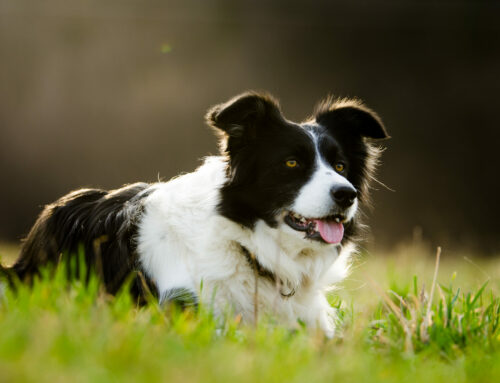HEATSTROKE IS A VERY SERIOUS CONDITION. IT CAN RAPIDLY DAMAGE TISSUES LEADING TO ORGAN FAILURE LEADING TO DEATH. IT MUST BE TREATED AS AN EMERGENCY.
As temperatures soar in Ireland, an increased number of heatstroke cases have been brought to our attention. It is important that we are all aware of these conditions to allow us to have fun with our furry friends in the warmer months.
What is it?
Heatstroke is an illness caused by the pet’s core body temperature rising too high. Mammals regulate their temperature constantly, meaning our core body temperature barely changes at all. When the temperature reaches a certain level, the tissues become damaged and reactions that normally occur in the body stop. Mammals are very sensitive to temperature changes hence the body’s ability to shiver and sweat involuntarily dependant on temperature stimulus. However, cats’ and dogs’ sweating mechanisms are much less effective than humans’. We have sweat glands spread around our whole body but cats and dogs mainly only have them around their footpads.
Symptoms of heatstroke
Symptoms differ depending on the species of the pet.
They will first show: panting, laying around a lot, lethargic behaviour, increased heart rate, dribbling and foaming from the mouth.
If the heat stroke becomes more serious then you may see your pet collapse, with reddened skin, dizziness, vomiting and diarrhoea, bright red gums and tongue. They may suffer from tremors or seizures, and eventually may die without treatment.
Which animals are most likely to get heatstroke?
Brachycephalic breeds who have flat faces (e.g. pugs) are likely to suffer as they struggle to pant effectively reducing their ability to lose heat via the mouth. Bachycephalic cats and rabbits (e.g. Persians and Lionheads) are also at higher risk, as their shorter noses cool them less effectively.
Animals with a very thick coat or/and excessive fat are likely to suffer. The extra layers act like insulators trapping heat within the body and reducing the rate at which it can leave the body.
Regulating the body temperature uses a series of complex mechanisms and communication pathways within the body. In young animals, these mechanisms may not be fully developed and therefore their heat regulation is not as effective.
Older animals may not be able to regulate their body temperature as well either as their internal body communication becomes less effective and reactions taking place occur more slowly.
What should I do if I think my pet has heatstroke?
Seek veterinary attention as soon as possible.
While at home, you need to gradually cool your pet down. If you cool your pet down too suddenly, you may send them into shock, so it is usually best to use cool or tepid, rather than ice water. This can be trickled over the skin.
You can apply a damp cloth to your pet’s skin. Be sure to repeatedly rotate the cloth and resoak it every 2-3 minutes in cold water to ensure the cloth remains cool.
Encourage your pet to drink small volumes of water. This can help to rehydrate the body. Ensure they do not gulp it down quickly as this can cause further damage.
How do I prevent heatstroke?
All animals need a constant water supply. The water needs to be kept cool and clean to keep it palatable.
Small animals kept outside in cages need to be moved into shaded areas. Direct sunlight in warm weather is dangerous as it easily leads to overheating, that they cannot escape.
Letting your animals out into their runs or out of the house early and late in the evening is a good way to prevent overheating. The cooler weather allows your pet to exercise to a higher intensity whilst the weather is cooler meaning they have less energy during the middle of the day. This prevents exercise at peak heat times. Dogs should be walked in cooler parts of the day too. Warmer weather makes animals exercise intolerant so do not push your pet to do more exercise than they are willing to do. You may also have to hold back enthusiastic dogs to prevent them from over-exerting themselves in the heat.
Placing your animal’s bed, toys, food and water in the shade while they are outside is a good way to encourage your animal to remain in the cool weather.
If possible, you should try to keep your animal in the house during peak heat season.
Many breeds of dog have different coats for different seasons. These coats are supposed to replace each other as the weather and daylight hours change; however, the growth cycle of each coat may not fall perfectly meaning you have multiple coats present at one. By grooming, we can help to remove the extra hair that has not yet fallen out. Additionally, some dogs do not moult and need their fur trimming in order to help them remain cool. Different breeds require the maintenance of different hairs for thermoregulation so it is often best to get a professional groomer to remove the hairs rather than trying to do it yourself.
Heatstroke is a very serious condition and it should be treated rapidly. It is easy to prevent allowing us to enjoy time playing with our furry friends in the summertime.



